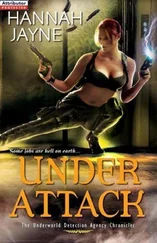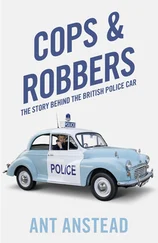Horder’s recommendations to reduce overcrowding, and various other measures, were largely followed – but slowly. They included providing a first aid post with a nurse in eighty-six shelters, the appointment of Shelter Marshals in the larger ones, prohibiting smoking in public shelters unless a separate section for smokers could be provided, the issue of masks to guard against infection, improved sanitation and lots of scrubbing with disinfectant, and using blowtorches on crevices to kill bugs – and regular inspections by Medical Officers of Health and their staffs to make sure all was as it should be. The greatest fear must have been of a diphtheria, measles or whooping cough epidemic, but fortunately this never happened; the main health hazards were impetigo, lice and scabies: most shelters were soon regularly sprayed with sodium hypochlorite or paraffin to try to deal with this, and any wooden bunks were replaced by metal ones, as wood was hospitable to lice. Hilde Marchant, in her unofficial role as ‘East End Commissioner’, was all for people being required to pass through a ‘Health Ministry hut’ at the entrance to every shelter, with disinfectant liberally used, and any unfit person being weeded out and sent to hospital, while bunks would be disinfected daily too, and bedding inspected and carted off to be fumigated if necessary.
Bedding was a touchy subject, since obviously it was likely to harbour bed bugs and worse. The Ministry of Home Security advised that it should be ‘aired daily so it keeps sweet and fresh’. The Swiss Cottager , a news-sheet produced by and for those who sheltered at that particular Bakerloo Line station, urged shelterers to ‘PLEASE stop the evil habit of shaking out blankets, mattresses etc., over the track each morning. The spreading of dust and germs over people, many of whom suffer from coughs and colds and “shelter throat” is little more than criminal. One of the gravest dangers we face is the spread of infection. Take your bedding home and do the shaking in your own back yard.’
While shelterers were being warned that ‘Coughs and Sneezes Spread Diseases’, and that they should always use a handkerchief, the chemist Sidney Chave, who had been drafted into the Emergency Public Health Laboratory Service, ‘set up primarily to protect the health of the civilian population under the stresses of war’ at the London School of Hygiene and Tropical Medicine, was trying to produce ‘a simple snuff which could be widely distributed to prevent the spread of diseases among the people who crowd into the underground … each night’. In December a mosquito prevention squad started work, since in the warm, damp atmosphere these were a constant irritation, and experiments started with disinfectant sprays incorporated into ventilation systems in case an epidemic did take hold.
Getting people to and from work was regarded as a wartime priority, and police patrolled the tube stations to ensure that no one took up residence before the official entry time of 4 p.m. There were two white lines painted on the platform: until 7.30 p.m. shelterers were obliged to stay behind the first one, eight feet back from the platform edge, so passengers could get on and off the trains. After that they could spread out to the second line, four feet from the edge of the platform, and also occupy corridors and stairways. Although most people were sympathetic to the plight of the tube troglodytes, some found it a ‘terrible hindrance … it is practically an impossibility to get anywhere quickly these days’.
Behind those white lines, a great deal went on between 4 p.m. and 11 p.m., when most adult shelterers retired for the night. Some entertainment was generated by the shelterers themselves: sedentary pleasures such as reading, writing letters, knitting, playing cards or board games, gossiping, playing the mouth organ or wind-up gramophone, having a communal singsong or dancing. Parties, quizzes and play readings were organised to pass the long air-raid hours. Bermondsey held a weekly discussion group at which the topics included travel, unemployment and ‘Should women have equal pay for equal work?’ The introduction of bunks was rather regretted by some, since it reduced the space available, but gramophones fitted with loudspeakers donated by the American Committee for Air Raid Relief to five of the largest shelters could make an evening spent in them seem more like a concert. Collections were taken for first aid equipment or towards a Christmas party, or presents for the children at Christmas.
Some shelters produced monthly news-sheets, including Holborn, Belsize Park, Goodge Street and the Oval, as well as the Swiss Cottager. There was also the Subway Companion , which was short-lived in its ambition to be distributed to all tube stations being used as shelters. ‘Greetings to our nightly companions, our temporary cave dwellers, our sleeping companions, somnambulists, snorers, chatterers and all who inhabit the Swiss Cottage Station from dusk to dawn,’ ran the Swiss Cottager ’s first instalment. Each issue offered information and advice: ‘a Committee of Shelter Marshals has been formed. It hopes to act as a bridge between you and the London Passenger Transport Board, and also do what it can for each and every person using this station at night. If you have any suggestion or complaint – if you think something should be installed, provided or remedied, please let us know and we shall do our best to meet your wishes.’ ‘To guard against colds and infection … a face mask can be made with a few inches of surgical gauze, or even butter muslin. Sprinkle it with a little oil of eucalyptus and tie over the face with a strip of tape at bedtime. We understand the government intends to do something about face masks. Unfortunately, intentions are a poor medicine and instructions a useless preventive.’ Exhortations: ‘there is still far too much litter in the station at the “All Clear”. It is the prime duty of each and every one to leave the station in a clean and decent condition. Dustbins are provided in the station for refuse.’ ‘Do not bring camp beds into the station. Three camp beds occupy as much space as four blankets or a single mattress, so the available space is reduced by one fourth. YOU might be that fourth person turned away for lack of room.’ ‘Don’t expect home comforts or plenty of elbow room. Suffer a little inconvenience to make room for the next person.’ ‘Vibration due to heavy gunfire or other causes will be much less felt if you do not lie with your head against the wall.’ ‘Please do not contribute to any unauthorised collection. Members of the Committee may be recognised by their carrying a yellow armlet with the letter “C” in black.’ ‘It is your duty to report anyone spitting to a member of the Committee or a Warden.’ Jokes: ‘Our morning paper tells us that one person in every eight snores. This station seems full of eighth persons.’ (Government-issue earplugs were supplied at stations: proof against the noise of Ack-Ack guns, perhaps, but maybe not snorers.)
Aldwych station, on a branch of the Piccadilly Line, was closed at the end of September and converted into an underground shelter. It had been reckoned that it would be able to accommodate 7,500, but although this was over-optimistic, once the walls had been painted, the rails removed and the track covered over with sleepers, and two hundred bunks and lighting installed, some 2,000 people were able to shelter in the tunnel that ran from Aldwych to Holborn. The space was extended in the spring of 1941, taking over part of the tunnel where the Elgin Marbles and other treasures from the British Museum were being stored. Westminster Council donated 2,000 books from the borough’s libraries for the shelterers’ use, educational lectures were arranged to pass the time, the left-wing Unity Theatre put on the lighter sketches in its repertoire, and ENSA (the Entertainments National Service Association, or ‘Every Night Something Awful’, depending on your point of view) imported entertainers such as George Formby, as well as Shakespearean plays and a projector for films underground. A local vicar conducted a regular service at the Aldwych shelter, and a play centre was provided for small children at Elephant and Castle, with a qualified teacher to provide handicraft lessons. Such diversions spread to other shelters during that long winter underground (soon fifty-two stations had a library), and at the request of the Mayor of Bermondsey, one of the most-bombed boroughs in London, the LCC sent instructors to the shelters to teach drama, dressmaking, handicrafts and first aid, while children were provided with paper and paints, and produced ‘violent masterpieces in which Spitfires bring down Heinkels amid sheets of flame’.
Читать дальше












